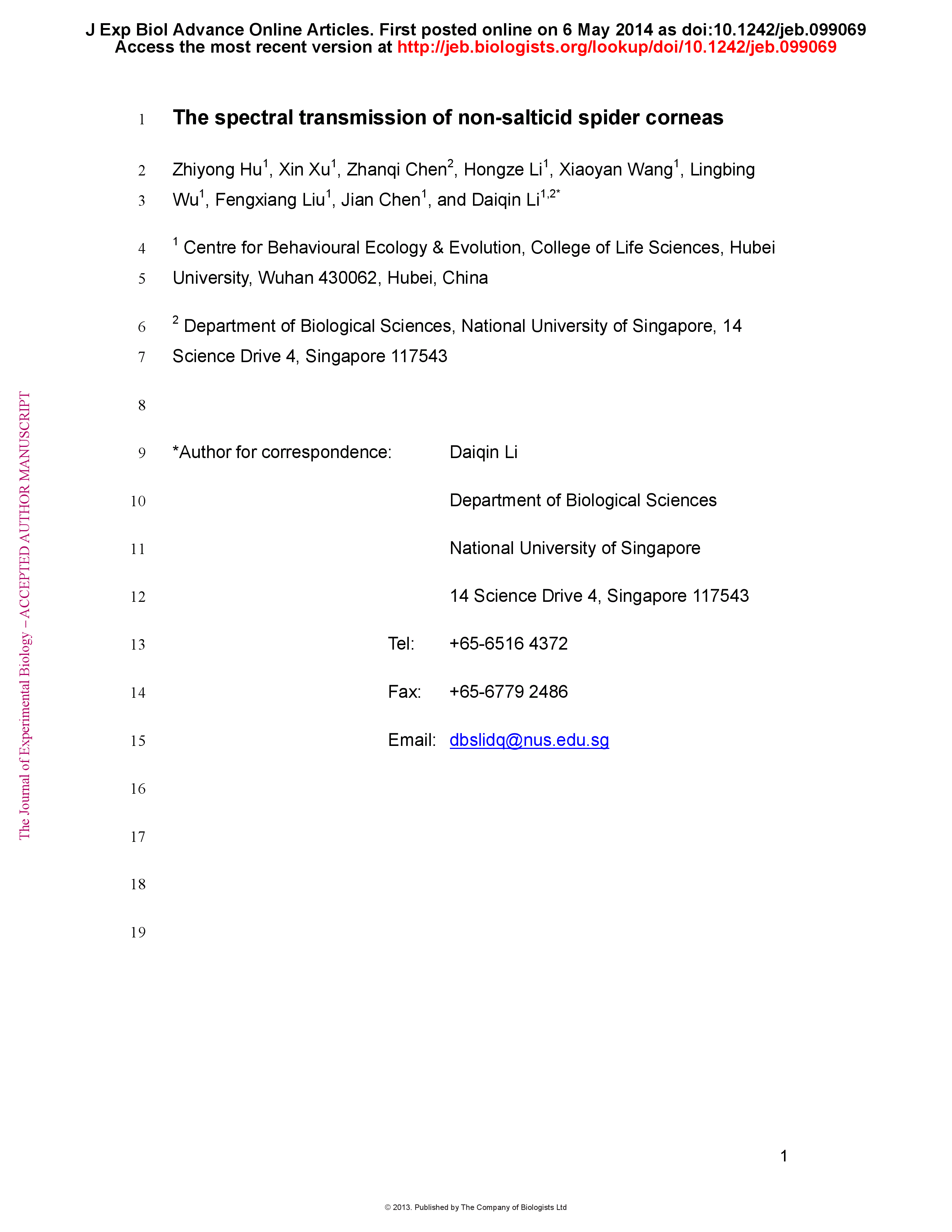Abstract
Although many salticid spiders have been shown to have corneas that transmit ultraviolet light (UV). Whether the corneas of non-salticid spiders transmit UV has not been previously investigated. In this study, we determined the spectral corneal transmission properties of 38 species belonging to 13 non-salticid families. We used these data to estimate the T50 transmission cut-off value, the wavelength corresponding to 50% maximal transmission for each species. The corneas of almost all species from the families Deinopidae, Lycosidae, Oxyopidae, Pisauridae, Sparassidae and Thomisidae, all of which have been reported to rely to a substantial extent on vision, transmitted short wavelengths below 400 nm, ranging from 306 to 381 nm. However, species from the families Atypidae and Ctenizidae are not known to rely substantially on vision, and the corneas of these species tended to absorb light of wavelengths below 380 nm, which may not allow UV sensitivity in these spiders. Liphistiidae, the family widely regarded as most basal among spiders, is of particular interest. The species in this family are not known to make substantial use of vision, and yet we found that liphistiid corneas transmitted UV light with a low T50 value (359 nm). T50 values of non-salticid spider corneas also varied with light habitat. Species living in dim environments tended to have UV-opaque corneas, but species inhabiting open areas had UV-transmitting corneas. However, there was no evidence of corneal transmission properties being related to whether a species is diurnal or nocturnal.








